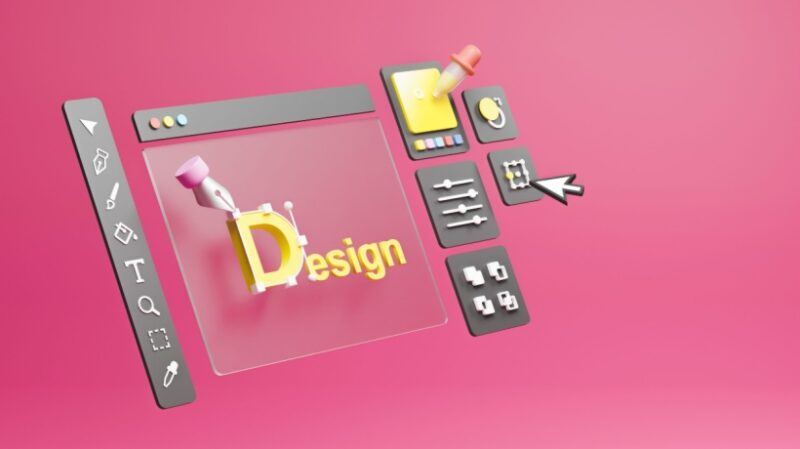
High-Impact Visual Style Concepts For Instructional Layout
A lot of Training Designers understand that the ability to write clear, concise text is a requirement for efficient Instructional Design. They recognize that message– whether printed or digital– is the cornerstone of the entire Instructional Style process, from design/development to distribution and task assessment, as defined listed below.
Text Required For Educational Design/Development (Internal-Facing Text)
- Discovering purposes
- Scope and series
- Blueprints for stakeholder sign-off
- Trainer guides
- Storyboards and manuscripts (for multimedia manufacturing)
Text Required For Instructional Delivery (Learner-Facing Text)
- Course product packaging (e.g., LMS home page)
- Schedule/syllabus
- Subject-oriented web content (such as designated textbooks or articles)
- Activity/assessment instructions
- User Interface creating for all ungraded practice interactivities
- Analyses and rubrics
- Video records, shut subtitles, and callouts
- Picture titles, inscriptions, and callouts
Text Required For Instructional Assessment (Internal-Facing Text)
- Response tricks
- Gradebooks
- Stakeholder responses (e.g., supervisor records)
- Analysis metrics and reports
But while excellent sources abound for Instructional Designers who wish to boost their ability to write efficiently, the recognition that Instructional Designers must also know with, and able to apply, standard but high-impact aesthetic format and design concepts is less well recognized– and couple of obtainable resources are offered to help us out. That’s an issue, due to the fact that formatting and layout can make or damage students’ capability to make significance from message.
Funded material – post continues listed below
Trending eLearning Writing Devices
High-Impact Visual Style Concepts For Creating A Knowing Experience
Below are the most essential and high-impact visual concepts to bear in mind when you’re making any learner experience– whether that experience takes the kind of educational packaging such as a training course web page, internet duplicate, a document, a slide deck, or a rated or ungraded interactivity.
Comparison
Comparison describes the visual difference in shade and value between foreground components and background elements. High comparison makes foreground elements stand out greatly to ensure that they’re easy for learners to see. Low comparison makes learners struggle to separate foreground and history elements, and this battle impacts not just visual charm, however learners’ ability to make meaning. This is the case because the human eye does not consume text linearly, the means the human ear takes in audio streams. Rather, our eyes flick to and fro across a page as we make and enhance links amongst the facts, ideas and concepts provided– and low-contrast aspects hinder that process.
- Quick win
For any passages of message longer than a word or two, constantly use black message on a white background– a specific high-contrast combination that has been confirmed to be most efficient for consuming message provided by means of print or screen.
Forming
Shape enables learners to translate and distinguish fundamental concepts swiftly. For Instructional Design functions, the most useful applications of form are icons (such as the prebuilt symbols used in layout software program) and organizing like elements.
- Quick win
Set streamlined icons or shapes with brief text labels to define connections and procedure flow (vs. classifying a lot more elaborate images or photos, which communicate unimportant details and reduce student cognition needlessly.)
Dimension
Because human beings have a tendency to associate dimension with significance, students will naturally analyze content represented by a huge picture as more crucial than content stood for by a little (or no) photo. In a similar way, learners will assume that principles presented utilizing an overmuch big amount of text, activities, assessments, or mins of video/live lecture are more vital than concepts offered with much less text or fewer mins of live action/running time.
- Quick win
Pick only the most crucial educational point(s) to supplement with visuals, and prevent “eye candy” (appealing yet unnecessary photos). Display important details, bottom lines, and titles/section headings in bolded or a bigger sized font style than the one you utilized to existing supporting details.
Proximity
Human beings assume that points which show up beside each various other are associated in some essential way. (The classic instance of this is coming home to locate our canine alongside a broken flower holder: We right away think our canine damaged the flower holder!) As Educational Designers, we can take advantage of this concept by visually organizing like things and aesthetically separating unlike points.
- Quick win
Use bulleted and numbered listings to team like text elements. Team aesthetic elements that are associated in some way, and clearly different visual components that are unconnected.
Positioning
Due to the fact that English reads inside out and left to right, English-speaking learners think that the most essential details on a given page or record appears on top left.
- Quick win
Placement main points on top or leading left of a document, display, or slide in order of coming down importance.
Well-meaning design layouts, consisting of those offered in the software applications that Instructional Designers regularly utilize, reinforce the mistaken but all-too-common assumption that aesthetic formatting and layout are subjective, optional nice-to-haves whose only purpose is to “make things rather.” Yet nothing could be further from the reality.
Formatting and design techniques are vital components of interaction. When applied attentively, the strategies defined above drive an audience’s capacity to make meaning. When we apply them inexpertly or neglect them completely, however, the results adversely affect both finding out results and (in corporate training situations) Roi.